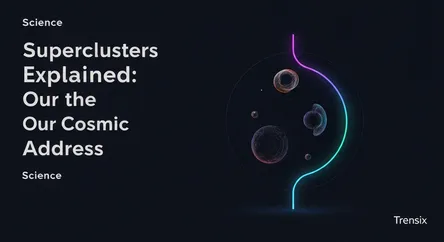Science
Superclusters Explained: Our Cosmic Address

Explore superclusters, the largest structures in the universe. Discover our own cosmic neighborhood, Laniakea, and why these massive formations matter.
What is it?
A supercluster is one of the largest known structures in the cosmos, consisting of large groups of smaller galaxy clusters and groups. They are massive, gravitationally-bound formations stretching for hundreds of millions of light-years. These are not densely packed structures; galaxies within them are still separated by vast empty voids. Think of them as the major continents of the universe's large-scale structure, interconnected by filaments of galaxies known as the cosmic web. Our own Milky Way galaxy is part of the Local Group, which in turn is part of the Virgo Cluster, all of which resides within the colossal Laniakea Supercluster.
Why is it trending?
Interest in superclusters is fueled by advancements in cosmology and observational astronomy. Powerful telescopes like the James Webb Space Telescope and large-scale sky surveys are providing unprecedented data, allowing astronomers to map the cosmic web with greater precision. Scientists are studying the movement of galaxies within these structures to better understand the mysterious forces of dark matter and dark energy, which govern the universe's expansion. Defining the boundaries and dynamics of superclusters helps refine our models of cosmic evolution.
How does it affect people?
While a supercluster has no direct impact on daily life, its study fundamentally shapes our understanding of our place in the universe. Mapping our home, the Laniakea Supercluster, provides a profound sense of scale and cosmic context. This research helps answer fundamental questions about the universe's origins, its structure, and its ultimate fate. By understanding these massive formations, we gain deeper insights into the gravitational forces that shaped everything from the earliest moments after the Big Bang to the galaxy we inhabit today.